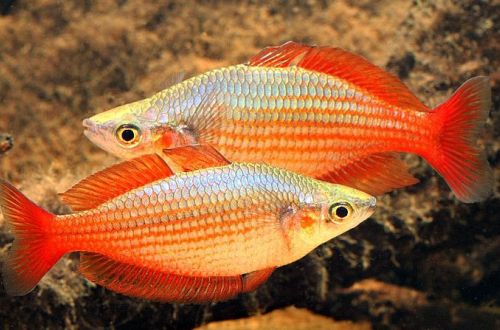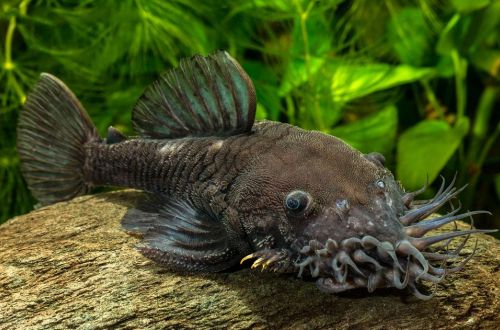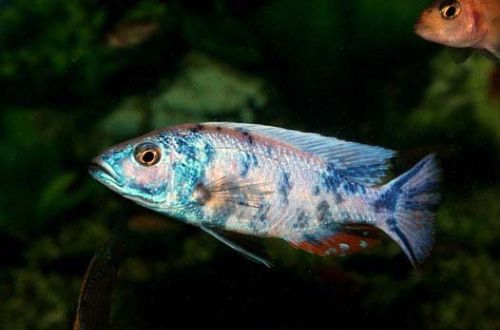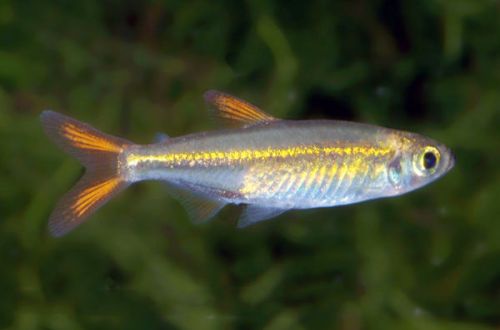
Eastern iris
The eastern iris, scientific name Melanotaenia splendida splendida, belongs to the Melanotaeniidae family. Beautiful, peaceful and unpretentious fish, perfectly adapted to life in a variety of conditions, so they will not cause much trouble when kept in a home aquarium.

Contents
Habitat
Originating from the Australian continent, it is found in various habitats such as tropical swamps, coastal freshwater lagoons, river deltas, streams. The natural habitat is subject to seasonal changes (temperature, hydrochemical composition of water), which determined the high adaptive capacity of this species. Fish prefer regions with calm water and an abundance of vegetation.
Brief information:
- The volume of the aquarium – from 110 liters.
- Temperature – 20-30°C
- Value pH — 5.0–8.0
- Water hardness – soft to hard (5-20 dGH)
- Substrate type – any
- Lighting – subdued / moderate
- Brackish water – no
- Water movement – weak/absent
- The size of the fish is up to 15 cm.
- Food – any food
- Temperament – peaceful active
- Keeping a flock of at least 6-8 individuals
Description
On sale under one name there are from four to six related subspecies that have similar external features. There are also two similar types on sale, which are often confused with each other. These are Cherry Rainbow and Red Striped Rainbow. Adults reach up to 15 cm. The color is reddish-brown with a grainy pattern. Saturated red color does not appear in all fish. It depends on the conditions of detention, diet and predisposition of a particular subspecies. Sexual dimorphism is weakly expressed, males differ from females in larger sizes and saturation of body colors. In a home aquarium with schooling, it will be problematic to distinguish a male from a female.
Food
Undemanding to the diet and nutritional composition. Accepts most popular foods (dry, frozen, live). It is advisable to combine different products, for example, flakes and granules to serve together with bloodworms or brine shrimp. This diet will allow the fish to show their best colors.
Maintenance and care, decoration of the aquarium
Acceptable conditions for a flock of 6-8 fish can be created in an aquarium from 110 liters. The design should include areas of dense aquatic vegetation interspersed with open swimming areas. The presence of snags in the form of roots and branches of trees is welcome.
Maintaining high water quality is essential. A productive filtration system and regular replacement of part of the water with fresh water will ensure suitable conditions for keeping the Eastern Rainbow.
It is worth noting that this species does not tolerate strong water movement, and the filter is its main reason. Care should be taken in the choice of model and the location of the filtration system in order to minimize the internal flow in the aquarium as much as possible.
Behavior and Compatibility
Peaceful active fish, compatible with other species of comparable size and temperament. However, they can cause inconvenience to slower neighbors in the aquarium. The content is flocking, at least 6–8 individuals of both sexes. It has been noted that males tend to show brighter colors in the presence of potential rivals. With this (coloration), they seek to attract the attention of females.
Breeding / breeding
Raduzhnitsy breeding is possible both in general and in a separate spawning aquarium. Favorable conditions for the beginning of the mating season are achieved at a temperature of 26–28°C, in slightly alkaline (pH 7.5) water of medium hardness. The design should contain thickets of small-leaved plants or their artificial analogues, among which eggs will be laid.
Spawning lasts about 2 weeks, during this time the female will lay several dozen eggs daily, and the male will fertilize them. Parental instincts are not developed, therefore, after the end of spawning, the fish do not show any interest in future offspring. If breeding was carried out in a common aquarium, then it is advisable to move the eggs to a separate tank with identical conditions. Otherwise, there is a great risk of them being eaten by other fish.
The incubation period lasts about 7-12 days. In the first days of life, fry are able to eat only microscopic food, for example, ciliates. After a week, you can serve brine shrimp nauplii or specialized powdered food for juveniles.
Fish diseases
Health problems arise only in case of injuries or when kept in unsuitable conditions, which depresses the immune system and, as a result, provokes the occurrence of any disease. In the event of the appearance of the first symptoms, first of all, it is necessary to check the water for the excess of certain indicators or the presence of dangerous concentrations of toxic substances (nitrites, nitrates, ammonium, etc.). If deviations are found, bring all values back to normal and only then proceed with treatment. Read more about symptoms and treatments in the Aquarium Fish Diseases section.





